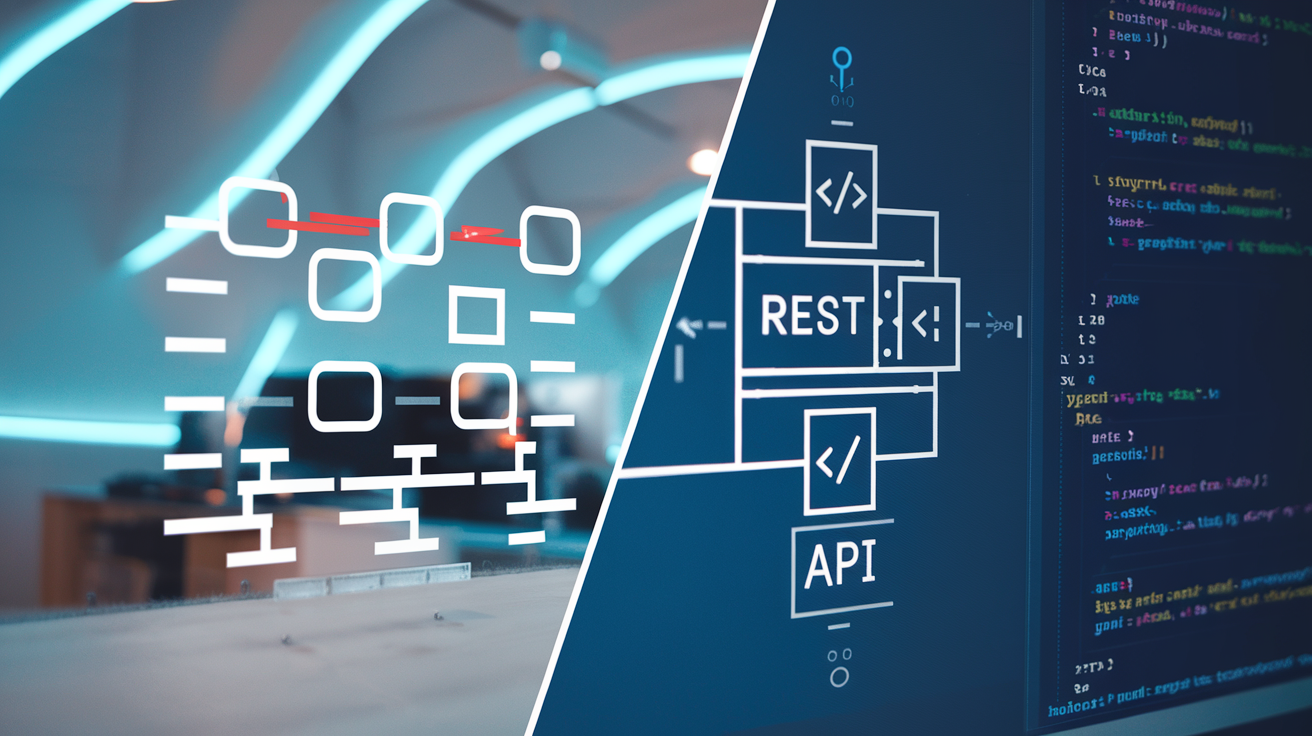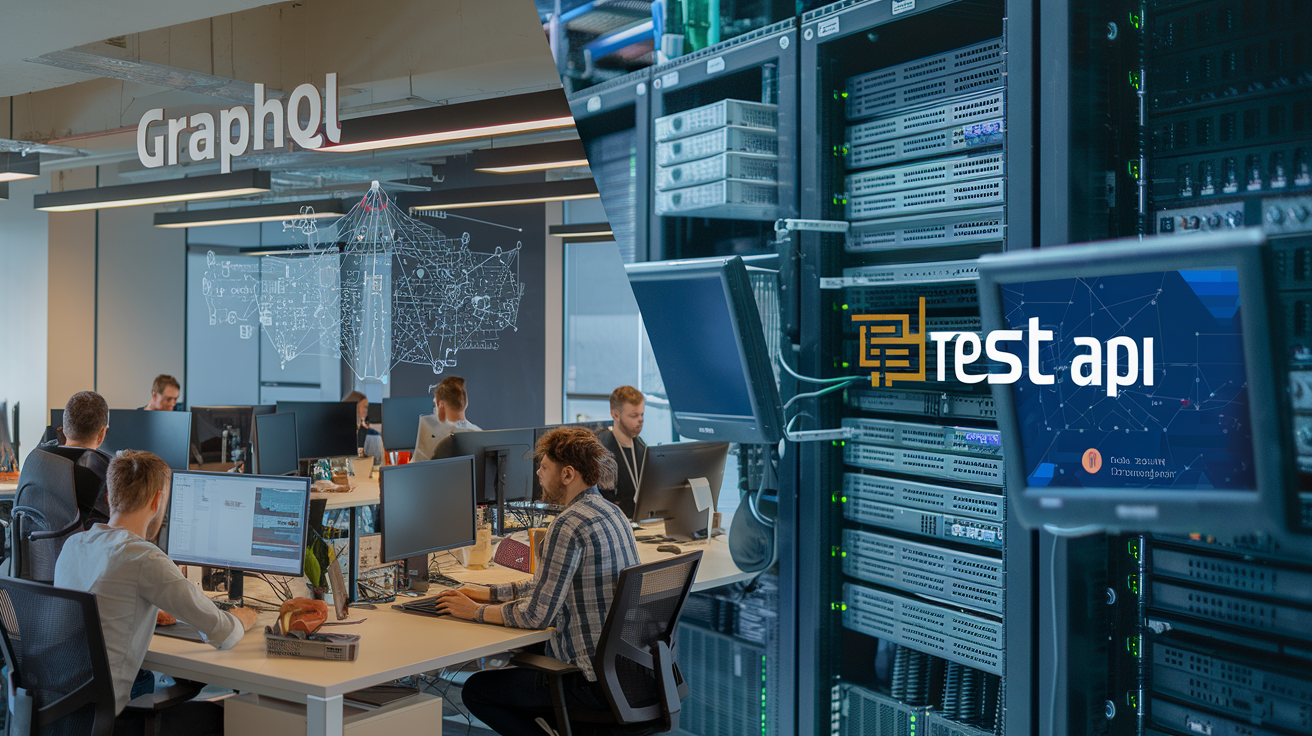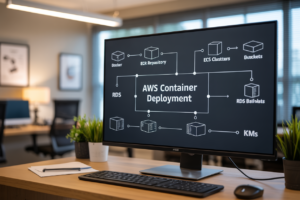Are you tired of slow, bloated API responses that leave your app struggling to keep up? 🐌 Enter the world of modern data fetching, where GraphQL and REST API reign supreme. But which one should you choose for your next project?
In this ultimate showdown, we’ll pit GraphQL against REST API, exploring their strengths, weaknesses, and everything in between. From data fetching efficiency to flexibility and customization, we’ll leave no stone unturned. Whether you’re a seasoned developer or just starting out, understanding the nuances between these two powerhouses is crucial in today’s fast-paced tech landscape.
Join us as we dive deep into the world of APIs, comparing GraphQL and REST across six key areas: understanding their core concepts, data fetching prowess, customization capabilities, learning curves, performance considerations, and real-world adoption. By the end of this journey, you’ll be armed with the knowledge to make an informed decision for your next project. Let’s get started! 🚀
Understanding GraphQL and REST API

Key features of GraphQL
GraphQL, developed by Facebook in 2012, offers several distinctive features that set it apart from traditional API architectures:
- Single endpoint: GraphQL uses a single endpoint for all data requests, simplifying API management.
- Declarative data fetching: Clients specify exactly what data they need, reducing over-fetching and under-fetching.
- Strongly typed schema: GraphQL APIs have a clear, self-documenting schema that defines all available data types and operations.
- Real-time updates: GraphQL supports subscriptions for real-time data updates.
| Feature | Description |
|---|---|
| Query language | Allows clients to request specific data in a single request |
| Hierarchical structure | Mirrors the structure of the data, making it intuitive to use |
| Introspection | Enables clients to query the schema for available types and fields |
Core principles of REST API
REST (Representational State Transfer), introduced by Roy Fielding in 2000, is built on several fundamental principles:
- Stateless communication
- Client-server architecture
- Uniform interface
- Cacheable responses
- Layered system
REST APIs typically use multiple endpoints, each representing a resource, and rely on HTTP methods (GET, POST, PUT, DELETE) for operations. They often return fixed data structures, which can lead to over-fetching or under-fetching of data.
Historical context and development
The development of these API architectures reflects the evolving needs of web applications:
- REST emerged as a response to the limitations of SOAP and XML-RPC protocols.
- GraphQL was created to address the increasing complexity of mobile app data requirements.
Both architectures continue to evolve, with REST introducing concepts like HATEOAS for improved discoverability, and GraphQL expanding its tooling and ecosystem. Understanding their historical context helps in appreciating their strengths and choosing the right approach for specific use cases.
Data Fetching Efficiency

GraphQL’s single endpoint advantage
GraphQL’s single endpoint approach offers significant benefits for data fetching efficiency:
- Reduces network requests
- Simplifies API management
- Enables precise data retrieval
| Feature | GraphQL | REST |
|---|---|---|
| Endpoints | Single | Multiple |
| Data retrieval | Precise | Fixed |
| Network requests | Minimized | Potentially many |
REST API’s multiple endpoint approach
REST APIs typically require multiple endpoints for different resources:
- Each resource has a dedicated endpoint
- Can lead to increased network overhead
- May result in complex API structures for large applications
Impact on network performance
The difference in data fetching approaches significantly affects network performance:
- Request volume: GraphQL reduces the number of requests
- Payload size: GraphQL allows for smaller, tailored payloads
- Latency: Fewer requests in GraphQL can lead to lower overall latency
- Bandwidth usage: GraphQL’s precise data fetching can conserve bandwidth
Handling over-fetching and under-fetching
GraphQL excels at addressing over-fetching and under-fetching issues:
- Over-fetching: GraphQL allows clients to request only needed fields
- Under-fetching: Clients can request multiple related resources in a single query
REST APIs often struggle with these issues, potentially leading to:
- Unnecessary data transfer
- Additional requests to fetch missing data
With this understanding of data fetching efficiency, let’s explore the flexibility and customization options offered by both GraphQL and REST APIs.
Flexibility and Customization

GraphQL’s schema-based structure
GraphQL’s schema-based structure offers unparalleled flexibility in API design. The schema acts as a contract between the client and server, defining all available types, fields, and operations. This approach allows developers to:
- Define complex data relationships
- Implement custom resolvers for specific fields
- Add new fields without breaking existing queries
Here’s a comparison of GraphQL’s schema structure vs. traditional API approaches:
| Feature | GraphQL | Traditional APIs |
|---|---|---|
| Data Model | Strongly typed schema | Loosely defined or implicit |
| Versioning | Single evolving version | Multiple API versions |
| Documentation | Self-documenting | Separate documentation required |
| Query Flexibility | Client-specified queries | Server-defined endpoints |
REST API’s resource-based architecture
REST APIs follow a resource-based architecture, organizing data into logical endpoints. This approach offers:
- Intuitive URL structure
- Caching capabilities
- Stateless communication
However, REST APIs can be less flexible when dealing with complex data relationships or evolving client requirements.
Adapting to changing client requirements
When it comes to adapting to changing client requirements:
-
GraphQL excels due to its:
- Ability to add new fields without breaking existing queries
- Client-specified queries, reducing over-fetching and under-fetching
- Strong typing, enabling better tooling and developer experience
-
REST APIs may require:
- Creating new endpoints for new data requirements
- Versioning to maintain backward compatibility
- More frequent backend changes to accommodate frontend needs
Now that we’ve explored the flexibility and customization aspects of both GraphQL and REST APIs, let’s examine the learning curve and implementation challenges associated with each approach.
Learning Curve and Implementation

GraphQL’s learning challenges
GraphQL introduces a new paradigm for API design and data fetching, which can present a steeper learning curve for developers accustomed to traditional REST APIs. Some key challenges include:
- Understanding the GraphQL schema language
- Mastering query construction and optimization
- Implementing resolvers and handling data relationships
- Managing state and caching in client applications
Despite these challenges, many developers find GraphQL’s benefits outweigh the initial learning investment.
REST API’s widespread familiarity
REST APIs have been the industry standard for years, resulting in widespread familiarity among developers. This familiarity offers several advantages:
- Shorter onboarding time for new team members
- Extensive documentation and best practices available
- Well-established patterns for common API operations
| Aspect | REST API | GraphQL |
|---|---|---|
| Learning Curve | Gentle | Steeper |
| Documentation | Abundant | Growing |
| Community Support | Extensive | Rapidly expanding |
Development tools and ecosystem
Both GraphQL and REST APIs have robust ecosystems, but with different focuses:
-
GraphQL tools:
- Schema design tools (e.g., GraphQL Playground)
- Client libraries (Apollo, Relay)
- Code generation utilities
-
REST API tools:
- API documentation generators (Swagger, OpenAPI)
- Testing suites (Postman, Insomnia)
- API gateways and management platforms
The choice between GraphQL and REST often depends on project requirements and team expertise. While REST APIs may be quicker to implement initially, GraphQL’s flexibility can lead to more efficient development in complex applications. As we move forward, let’s explore the performance considerations for both approaches.
Performance Considerations

Caching mechanisms in GraphQL and REST
Caching plays a crucial role in API performance optimization. Both GraphQL and REST have different approaches to caching:
| Caching Aspect | GraphQL | REST |
|---|---|---|
| Granularity | Field-level | Resource-level |
| Complexity | More complex | Simpler |
| Flexibility | Highly flexible | Less flexible |
| Implementation | Client-side caching | Server-side caching |
GraphQL’s field-level caching allows for more precise control, while REST’s resource-level caching is simpler to implement but less granular.
Query complexity and optimization
GraphQL queries can become complex, potentially impacting performance:
- Over-fetching: Requesting unnecessary data
- Under-fetching: Making multiple requests for related data
- N+1 problem: Inefficient nested queries
To optimize GraphQL queries:
- Use query batching
- Implement pagination
- Utilize query complexity analysis tools
REST APIs, on the other hand, may require multiple endpoints for complex data requirements, leading to potential over-fetching or under-fetching.
Server-side processing load
The server-side processing load differs between GraphQL and REST:
- GraphQL: Higher initial setup complexity, but potentially lower processing load for complex queries
- REST: Simpler setup, but may require multiple endpoints and requests for complex data needs
GraphQL’s ability to fetch multiple resources in a single request can reduce server load in certain scenarios. However, complex GraphQL queries may require more server-side processing compared to simple REST endpoints.
When choosing between GraphQL and REST, consider your application’s specific requirements and the trade-offs between flexibility and performance optimization. Both approaches have their strengths, and the best choice depends on your project’s needs and constraints.
Use Cases and Industry Adoption

A. Ideal scenarios for GraphQL
GraphQL excels in several scenarios, making it an ideal choice for specific use cases:
- Complex data requirements
- Mobile applications
- Microservices architecture
- Rapidly evolving frontend
| Scenario | Why GraphQL is Ideal |
|---|---|
| Complex data requirements | Allows fetching multiple resources in a single request |
| Mobile applications | Reduces over-fetching, saving bandwidth and improving performance |
| Microservices architecture | Provides a unified API layer for multiple services |
| Rapidly evolving frontend | Enables frontend teams to request only the data they need |
B. When REST API shines
REST API remains a powerful choice in certain situations:
- Simple CRUD operations
- Caching-heavy applications
- Public APIs with broad adoption
C. Real-world examples and case studies
Several prominent companies have successfully implemented GraphQL:
- GitHub: Migrated to GraphQL for its API v4, improving performance and flexibility
- Airbnb: Uses GraphQL to power its mobile apps, reducing API calls and enhancing user experience
- Netflix: Employs GraphQL for its internal API gateway, streamlining data fetching across services
D. Future trends in API development
As we look ahead, several trends are shaping the future of API development:
- Increased adoption of GraphQL for complex applications
- Hybrid approaches combining GraphQL and REST
- Enhanced tooling and ecosystem support for both technologies
- Focus on real-time data with subscriptions and live queries
The choice between GraphQL and REST will continue to depend on specific project requirements and team expertise.

GraphQL and REST API both offer powerful solutions for building efficient and scalable APIs, but they cater to different needs and scenarios. GraphQL excels in data fetching efficiency and flexibility, allowing clients to request exactly what they need in a single query. REST API, on the other hand, provides a simpler, more familiar approach with well-defined endpoints and HTTP methods. While GraphQL may have a steeper learning curve, it offers greater customization and can significantly reduce over-fetching and under-fetching of data.
Ultimately, the choice between GraphQL and REST API depends on your project requirements, team expertise, and specific use cases. Consider factors such as data complexity, client needs, and performance expectations when making your decision. Whichever approach you choose, remember that both technologies continue to evolve and find their place in modern web development, with many organizations successfully implementing hybrid solutions to leverage the strengths of both GraphQL and REST API.




















